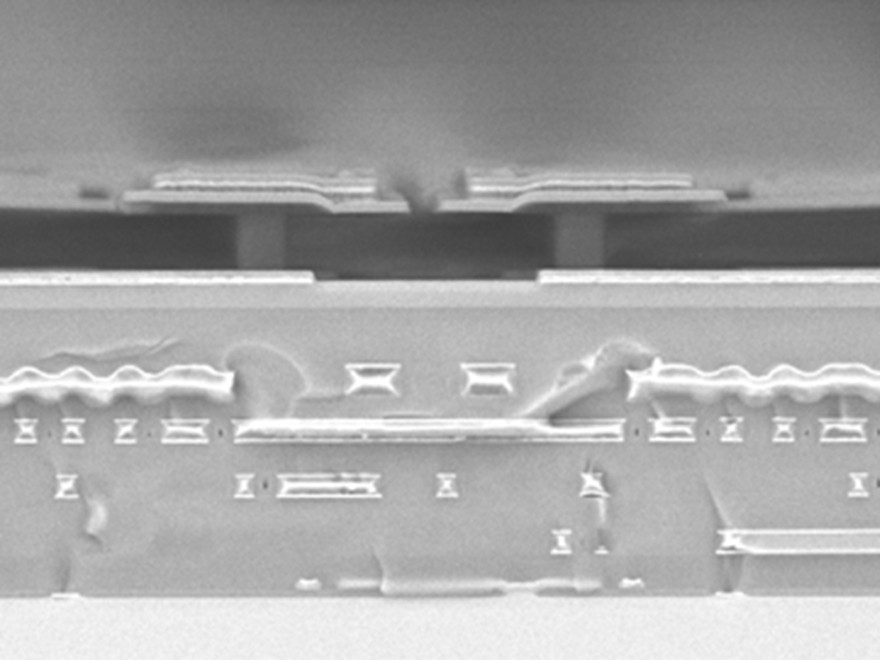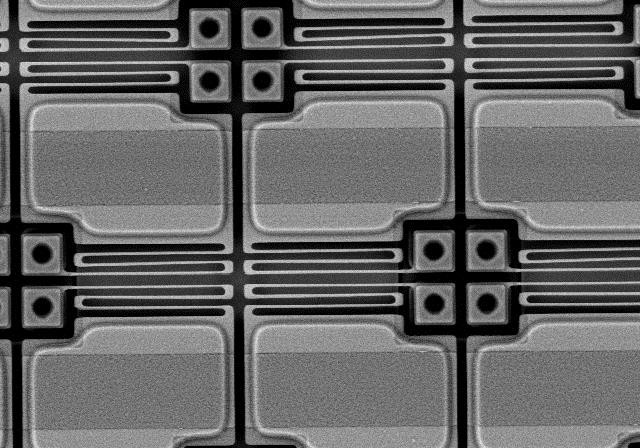The development of customized uncooled infrared sensors at Fraunhofer IMS in Duisburg builds on the use of several innovative technologies. The developed uncooled infrared sensors (IR imagers) are based on microbolometer technology for applications in the wavelength range 3 µm to 5 µm or 8 µm to 14 µm. The microbolometer as the sensor element of an uncooled IR imager works according to the thermal principle. In it, the incident IR radiation is absorbed by a sensor membrane and, due to very good thermal insulation, converted into a temperature increase and an associated change in resistance in accordance with the incident power.
Fraunhofer IMS has developed its own manufacturing process for microbolometers as a core competence and is thus the only manufacturer of microbolometers in Germany. For the readout technology of these microbolometers, a CMOS readout circuit has been developed at Fraunhofer IMS, which converts the temperature-related resistance change of the microbolometers into digital values by parallel use of a large number of ΣΔ-ADC. The digital and low-noise readout of microbolometers is manufactured in the in-house clean room using a 0.35 μm CMOS technology.
Microbolometers as sensing elements of an uncooled infrared sensor function according to the thermal principle and therefore have to operate in a vacuum package to reduce thermal losses due to gas convection. Fraunhofer IMS has realized the smallest possible vacuum package for uncooled IR imagers by developing a vacuum chip-scale package (CSP) technology. This vacuum chip-scale package contains an IR-transparent window with an anti-reflective layer and, in addition to the size advantage, also features cost advantages due to the integrated manufacturing process.
Based on these technologies: microbolometer technology, digital readout circuitry and vacuum chip scale technology, Fraunhofer IMS has developed a digital IRFPA (infrared focal plane array) with QVGA resolution and 17 µm pixel pitch. This has been used to develop a scalable, compact, low-cost and simply operated IR imager.
Fraunhofer IMS has also realized the world's first infrared line sensor with 340 pixels on the basis of this digital IRFPAS. The number of lines can be digitally configured according to customer requirements (2 - 256 lines).
To test the IRFPAs at the customer's site, Fraunhofer IMS has developed an IRFPA Eval-Kit camera. This camera allows new users to quickly commission and evaluate the IR imager. The IR camera consists of the IR optics, the recording of the actual IR imager, readout electronics, interface electronics and operating software realized. A modular design of the camera allows a fast and easy adaptation to different variants of the IR imagers manufactured at Fraunhofer IMS.


